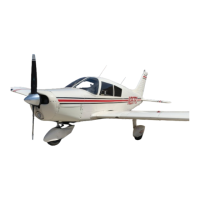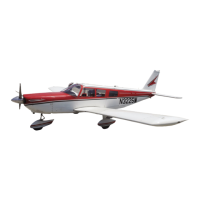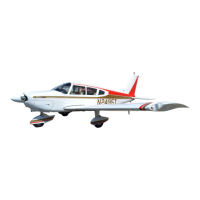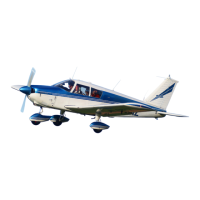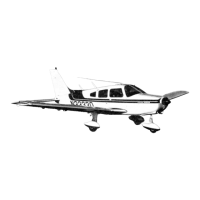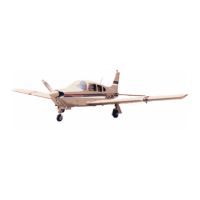17
4. ------------------------------------------------------------------------------------------------
a. The landing gear shock struts are properly inflated.
(Refer to Section VI)
b. The tires are satisfactorily inflated and not excessively worn.
5. ------------------------------------------------------------------------------------------------
a. The cowling and inspection covers are secured.
b. The windshield is clean and free of defects.
c. The propeller is free of detrimental nicks.
d. There are no obvious fuel or oil leads.
e. The engine oil is at the proper level.
f. Drain the fuel strainer with the fuel selector valve in left or right tank
position.
6. ------------------------------------------------------------------------------------------------
a. The tow-bar and control locks are detached and properly stowed.
7. ------------------------------------------------------------------------------------------------
a. Upon entering the airplane, ascertain that all controls operate
properly.
b. Close and secure the cabin door.
c. Check that required papers are in order and in the airplane.
d. Fasten safety belts and shoulder harness. Check inertia reel.
STARTING
After completion of preflight inspection:
1. ------------------------------------------------------------------------------------------------
a. Lock the wheel brakes.
b. Set the carburetor heat control in the full "COLD" position.
c. Select the desired tank with the fuel valve.
d. Move the mixture to the full "RICH" position.
e. Open the throttle 1/8 to 1/4 inch.
f. Turn the electric fuel pump "ON".
In cold weather (below 40°F.) prime the engine with one to three full strokes of
the priming pump. If extremely cold, starting will be aided by pulling the
propeller through by hand (switch "OFF") four to five revolutions.
If the temperature is above 40°F the engine may be primed by three or four
short quick strokes of the throttle.
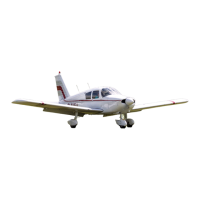
